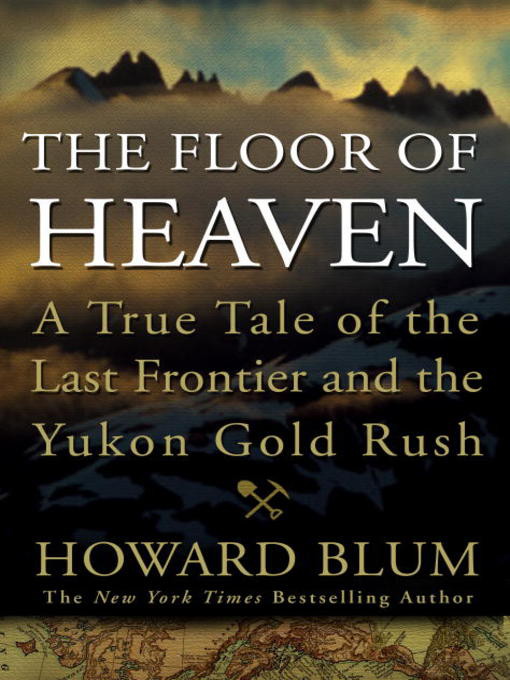
The Floor of Heaven: A True Tale of the Last Frontier and the Yukon Gold Rush PDF
Preview The Floor of Heaven: A True Tale of the Last Frontier and the Yukon Gold Rush
Guest Reviewer: Michael Korda on The Floor of Heaven
© Lars Lonninge _Michael Korda is the Editor in Chief Emeritus of Simon & Schuster. His books include With Wings Like Eagles: A History of the Battle of Britain; Ike: An American Hero; Another Life _and Hero: The Life and Legend of Lawrence of Arabia.
At frequent intervals the “Western” has been declared dead and buried, this despite the fact that Larry McMurtry has been keeping it alive and well for almost half a century, and that in the motion picture business it regularly reappears and scores a huge success, as in Clint Eastwood’s The Unforgiven or the Cohen brothers’ brilliant remake of True Grit. As Faulkner put it, the past is not only not dead, it is not even past. Judging by the daily newspaper, events along the border with Mexico seem pretty much like events along the border in the days of the Earp brothers, except that drug smuggling has replaced cattle rustling. The Old West is not only not dead, it is still there, and filled with bigger-than-life figures and endless shootings.
Of course the West that is fixed in the American mind tends to look towards the south, and resonates to the clink of spurs and the jangle of bridles and bits. The most unusual aspect of Howard Blum’s brilliantly readable new book is that while it’s clearly a non-fiction Western story, it takes place along the border of Canada, not Mexico, and is centered on the Yukon Gold Rush, in Alaska, rather than Texas.
To say that it reads like a novel is a cliché of course--people say that about half the non-fiction books published, and it’s mostly not true--but in this case Howard Blum’s narrative skill is such that The Floor of Heaven does read like a novel, and a rich and entertaining one at that. At the heart of it of course is the discovery of gold in 1896, and the way it draws people like a magnet to a hitherto pretty empty spot on the map (to the extent that it was mapped at all), and one moreover with a killer climate. Blum manages to make this exciting reading--the first fifty pages of the book, in which he “sets up” the event and his major characters are so artfully done that one only gradually realizes that these are real people, not fictional characters, and that Blum has in fact done a painstaking job of research, and uncovered a remarkable amount of documentation--in fact his main problem, as he himself notes, is that these people left too much material behind them, not any lack of it. As in Larry McMurtry’s books, the villains and heroes of the West were so busy telling their stories to writers while they were still alive and kicking that it’s a wonder they ever found time to rob a bank.
Blum’s chief characters, are a Marine Corps deserter named George Carmack, whose discovery sets off the stampede to the Yukon, a flamboyant western villain named “Soapy” Smith, and a cowboy turned Pinkerton detective named Charlie Siringo, and it would be a disservice to the reader to tell the story of the interaction between them, which is full of suspense, and includes, at the very end, a real-life western gunfight. Suffice to say that he managers at once to produce a very readable work of history and an amazing real-life adventure story, peopled with characters that any novelist would be proud to have invented: first rate entertainment.
--Michael Korda
From Publishers WeeklyStarred Review. Blum, author of the bestselling and Edgar-winning American Lightning, displays all his creative gifts here. Using primary source materials from the three individuals around whom the narrative revolves, he tells a fascinating story of the 1897 Klondike Gold Rush. Charlie Siringo was a larger-than-life hero, a cowboy turned successful businessman turned Pinkerton detective renowned for his sense of duty. Jefferson "Soapy" Smith epitomized the frontier "confidence man" who considered dishonesty a way of life. George Carmack, the prospector who precipitated the great Alaska gold rush that drew the men together, deserted from the Marines, married a Native American, and pursued his prospecting dreams to the Klondike. Detailing crimes perpetrated and solved, relationships both happy and tragic, hardships unthinkable in the modern age, and the cold, magical allure of Alaska and the Yukon, Blum captures the spirit and mood of the last of the Old West. The final pages, especially, are filled with drama and a strange yearning. From a purely historical perspective, there should have been more information on Alaska as a Russian colony and American territory, but as an exciting narrative, this is a huge success. 8 pages of b&w photos; 1 map. (Apr.)
(c) Copyright PWxyz, LLC. All rights reserved.
